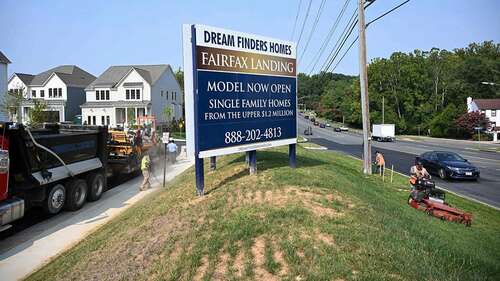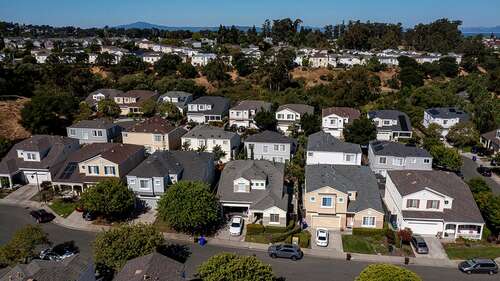‘Mansion Global’ host Katrina Campins has the latest on the real estate market on ‘The Bottom Line.’
Home foreclosures saw a “notable” increase in January as Americans continue to grapple with the ongoing cost-of-living crisis.
That is according to a new report published by real estate data provider ATTOM, which found that lenders repossessed 3,954 U.S. properties in January, a 13% increase from the previous month. It marked the first monthly increase in completed foreclosures since July 2023.
Foreclosures are up just 1% from the same time one year ago.
“We observed a slight uptick in foreclosure filings, which may be partially attributed to the typical post-holiday progression of filings through the legal system,” said ATTOM CEO Rob Barber. “However, other external factors may be at play such as escalating interest rates, inflation, employment shifts and other market dynamics.
WHY CAN’T YOU FIND A HOUSE FOR SALE?

Affordability is worsening across the country, thanks to a spike in both home prices and mortgage rates. (Andrew Caballero-Reynolds/AFP via Getty / Getty Images)
The report also indicated that there were 37,679 properties with foreclosure filings – which includes default notices, scheduled auctions and bank repossessions – in January, up 10% from the previous month and up 5% from 2023.
The increase was even greater in some states. In Michigan, completed foreclosures jumped 200%, while they rose 47% in Minnesota and 43% in California. Pennsylvania saw a 36% increase, and Missouri a 34% increase.
Although foreclosures are on the rise, they remain well below the levels recorded during the 2008 financial crisis.
But the problem could soon get worse as high home prices, mortgage rates and property taxes bite Americans.
MORTGAGE CALCULATOR: SEE HOW MUCH HIGHER RATES COULD COST YOU

The housing shortage has only served to boost consumer demand, which is keeping prices uncomfortably high. (David Paul Morris/Bloomberg via / Getty Images)
Housing affordability is the worst it’s been in decades, thanks to a spike in home prices and mortgage rates. Combined, the two have helped to push the typical portion of average wages nationwide required for major homeownership expenses up to 33%.
There are several reasons to blame for the affordability crisis.
GET FOX BUSINESS ON THE GO BY CLICKING HERE
The Federal Reserve’s aggressive interest-rate hike campaign sent mortgage rates soaring above 8% for the first time in nearly two decades last year. Rates have been slow to retreat, hovering near 7% as hotter-than-expected inflation data dashed investors’ hopes for immediate rate cuts.
The average rate for a 30-year fixed loan rose to 6.9% this week, Freddie Mac reported, well above the pandemic-era lows of 3%.
Even though mortgage rates are nearly double what they were three years ago, home prices have hardly budged. That is largely due to a lack of available homes for sale. Sellers who locked in a low mortgage rate before the pandemic began have been reluctant to sell, leaving few options for eager would-be buyers.



